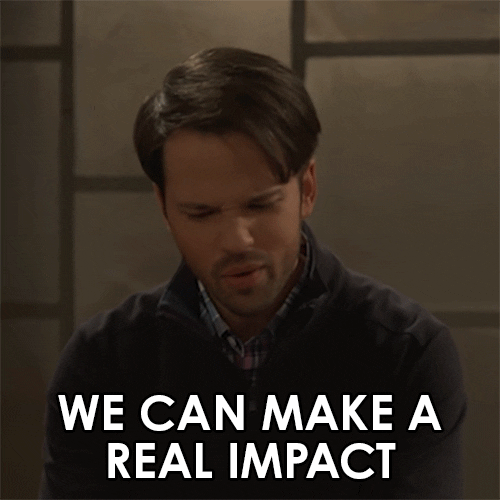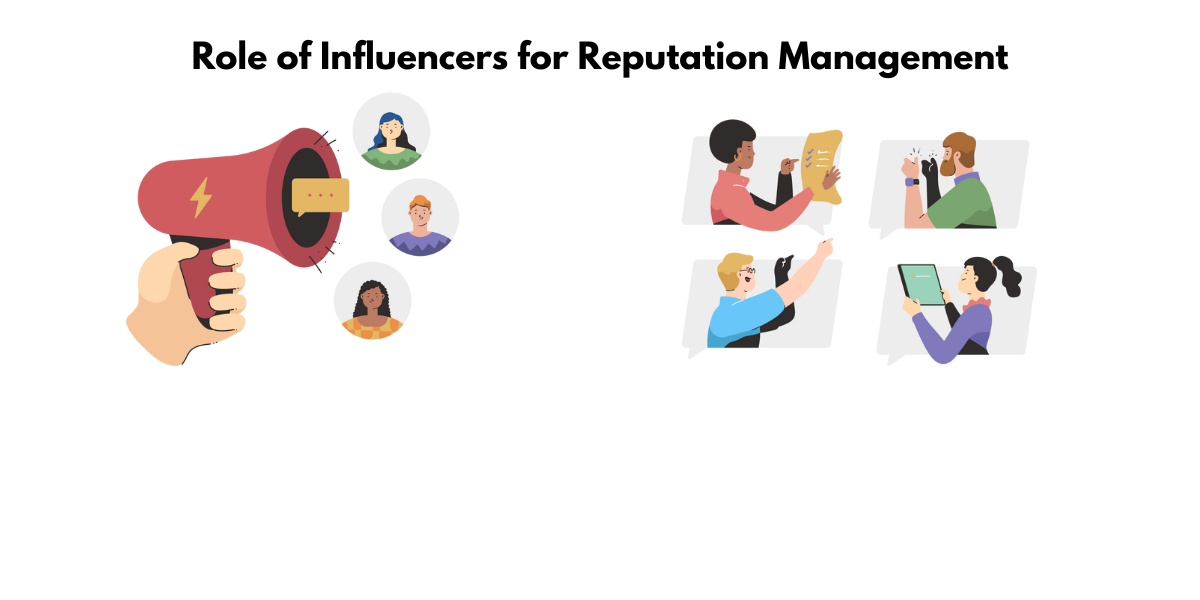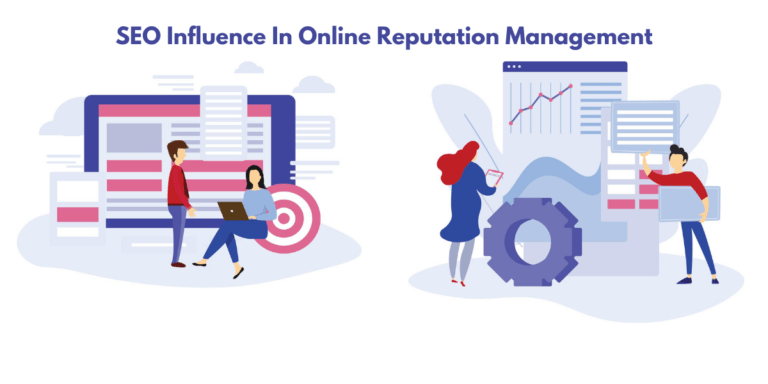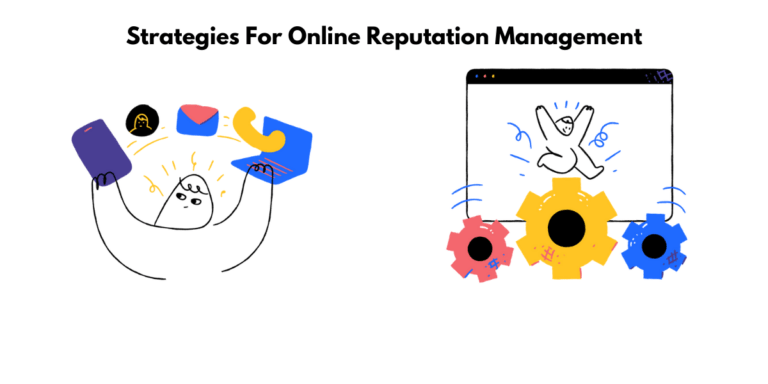Influencer Mapping: Using Influencers for Reputation Management
Influencer mapping is identifying and analyzing large data sets of influencers. Companies can better target their market by understanding who the key players are in a given space. Influence maps are created by identifying groups of people with shared interests or characteristics- these groups are known as audiences. Once the target market is identified, companies can use different mapping parameters to explore that group in more detail. Mapping is an approach for exploring small audiences in greater depth and can be used to identify potential customers, partners, or investors.
Regarding reputation management, using influencers is one of the best ways to optimize your narrative and content and increase ROI. Additionally, you can uncover new market opportunities with the help of influencers. However, to market to software developers effectively, you need to start with data and create relevant content that appeals to them.
What is influencer mapping?
Influencer mapping identifies and tracks influencers within your industry to identify potential partners, affiliates, customers, and ambassadors. They can also be used to find out which influencers are the most influential within your industry.
Influencer mapping is the process of identifying, locating, and ranking influencers. This information can help brands understand where they should invest their marketing dollars in reaching their target audience. Additionally, it can help identify key opinion leader (KOLs) who may greatly impact consumer decisions or ideas.
Mapping influencers allows brands to compare them based on the size of their consumers and rankings. This makes it easy to see which influencers would best fit a particular campaign or product launch. Additionally, brands can better tailor their content and messaging to specific regions or countries by understanding where these influencers are located geographically.
What is reputation management in social media?

Reputation management in social networks is the practice of monitoring, managing, and influencing a company’s or individual’s reputation on social networking platforms. It has become an important aspect of businesses’ overall marketing strategy as more people use social media to make purchasing decisions. To manage a company’s reputation on social media, it is important to create and distribute high-quality content that the target market will see. Additionally, tracking conversations about the company online and responding quickly and appropriately is necessary.
The practice of online media analytics has become an important tool for reputation management. Understanding how users interact with a brand or company on a social media platform makes it possible to identify the influencers impacting perception and take steps to improve value perception. Additionally, with the advent of customizable solutions, businesses can now more effectively target their interactions with key stakeholders mapping.
Reputation management in social networks is the process of monitoring, managing, and protecting a company’s online reputation. One important part of this process is identifying the key influencers who impact how people view your company. Our influencer mapping service uses a heat map to identify the influencers and their relationships with your brand. This information can help you align your marketing efforts with your business objectives, making it more actionable for companies of all sizes.
How is social media impacting our society?
Social networking has had a profound impact on our society, and it will only continue growing. Here are some of the ways social networking is impacting our lives:
We’re more connected than ever before. Social networking allows us to connect with people worldwide who share our interests.
It’s changing the way we communicate. Social networking has replaced traditional forms of communication, such as letters and phone calls.
We’re more informed than ever before. Online media provides us access to news and information from around the globe.
It’s changing the way we think. Online media allows us to process information faster and make decisions quicker.
How can you improve your social media reputation?
Maintaining a positive reputation in online media is essential for businesses. It can help protect against negative criticism and improve company image and customer loyalty. However, it is not easy to do, especially if your company faces a natural disaster. Here are some tips on how you can improve your online reputation:
- Use influencer mapping to identify the key people talking about your company online. Make sure these people are genuine influencers who can reach your target audience.
- Connect with these influencers and develop relationships with them. This will help you execute your marketing campaigns better.
- Use Media Analytics to understand what is being discussed and around your company. Categorize your key influencers into actionable segments so that you can analyze the structural properties of a discussion.
- Monitor sentiment analysis to see whether people are talking positively or negatively about your company online. Take appropriate action based on this information.
- Develop a messaging strategy tailored specifically for online media platforms. Integrate this strategy with your overall marketing plan.
- Use our Reputation Analytics tool to track flows of reputation to devise an effective messaging strategy.
- Be proactive in your reputation management efforts, and respond quickly to any negative criticism.
- Manage your company’s online media accounts professionally. Make sure that all content is accurate and up-to-date.
How to use social media for small businesses?
There are a few key ways businesses can use online media to their advantage, and one of those is through influencer mapping. Influencer mapping allows businesses to find and target multiple influencers who influence their target audience the most. This information makes it easier to determine which people should be approached for collaboration to reach the target market more efficiently. Additionally, a genuine connection with certain business-name influencers will help businesses implement an effective potential influencer marketing campaign.
Media analytics studies how media and online media are used to understand consumer behavior. Social media analytics specifically looks at how social networks operate and how businesses can use this information to stay ahead of their competition. Additionally, reputation analytics combines social intelligence, analysis, and tracking that allows businesses to track any negative reputation activities on various platforms. This can lead to increased revenue and brand power.
Small businesses can use online media to:
- Increase brand awareness.
- Generate leads and sales.
- Better understand their customers.
- Improve public relations.
- Build relationships with customers and other businesses.
The importance of influencer mapping
Influencer mapping is a process that helps companies and businesses identify influencers in their niche who are most likely to influence a decision-maker to buy products or services. This allows them to create targeted marketing campaigns and measure the effectiveness of those campaigns.
Influencer marketing strategy is a type of marketing focused on leveraging key individuals’ influence maps to drive a campaign’s success. These individuals, called influencers, have large audiences that they can persuade to take action. Because of this, businesses are seeing more and more success with marketing campaigns. Some benefits of using this strategy include attracting new leads and increasing conversion rates. However, it’s important to note that not just any influencer will do. The success of an influencer marketing campaign hinges on contacting the right people.
Finding the right influencers for your business is essential when it comes to marketing. Influencer mapping is a way to do just that. By identifying influential people and mapping out their relationships with others, you can better understand your target market and how to reach them. Additionally, influencer mapping can help you better understand your company’s reputation and what marketing campaigns might be most successful in reaching your target audience.
Determine key influencers
Mapping your influencers is the first step to finding the right people to help promote your brand or product. It also helps you understand your current contacts’ most influential.
You can use a tool like Grin to measure the interactions and effectiveness of your participation in an effective influencer campaign. This will help you visualize how influential your influencers are and what audiences they may be able to reach. Additionally, it allows you to collaborate with other businesses more easily and greatly impacts your marketing efforts.
Find right audiences
Almost any organization can benefit from marketing. However, you must first find the right market to get the most out of it. That’s where influencer mapping comes in.
By mapping your influencers, you can identify hidden audiences that you might not have targeted before. This expanded reach allows for a greater potential for conversions and customers. Additionally, it helps build brand awareness and affinity with potential consumers.
Puts an influencer’s influence to the test
A/B testing is a marketing technique that helps marketers compare different campaigns with each other to determine which one has the most success. To do this, marketers take two different versions of a campaign (A and B) and compare how each performs. This can help you figure out what works best for your company and who your target market is.
Influencer mapping helps you optimize your influencer marketing by comparing them and ensuring they are best for your brand. By mapping out all of your influencers, you can get an idea of who works best with whom and where they overlap and differ in terms of reach and impact. This information can then be used to decide who to partner with for future campaigns.
Influencer mapping provides an easy way to find influencers specific to your company- which can be difficult when working with platforms like Twitter or Instagram. With so many people on these platforms, it’s hard to know who would be the best fit for promoting your product or service without some help from software that does the legwork for you.
Influencer campaigns can help you optimize your influencer marketing efforts by better understanding how various audiences respond to different influencers. Not all campaigns are successful, but by analyzing the data, you can learn what works and what doesn’t to improve your chances of success in the future.
Businesses that have implemented successful influencer marketing campaigns include Nike, Apple, and Starbucks. These businesses have effectively used influencers to reach new audiences and increase their bottom line.
Affinities and content
Affinities are important when it comes to an understanding of how content is shared. Mapping tools can help identify these relationships between different people and companies. For example, an influencer may share information about a company because they have an affinity for it. It’s important to understand the nature of these relationships, as it can impact the type of content that’s shared. Additionally, not everyone has access to all types of content. The first two options are to rent and buy the content, while other access is a login option that may not be available for everyone.
Engagement data
Engagement data is critical for understanding how people interact with your content. It can help you identify the key influencers in your industry and understand what content is resonating with your consumers.
The advantage of influencer mapping is that it provides accurate data on interactions with content. This information can be used to determine which topics to focus on and identify new areas for growth.
Influencer mapping is a visual way to show relationships between influencers; audience maps show larger audiences. By understanding the connections between different groups of people, you can better target your marketing efforts.
B2B marketers spend a lot of time mapping influencers and analyzing data before launching campaigns. They need to ensure they’re reaching the right people with the right message to achieve their desired results.
B2C companies focus more on identifying topically relevant influencers to launch campaigns without needing heavy research beforehand. However, it’s still important to track interaction levels so you can determine if a campaign was successful or not.
Influencer mapping is a data visualization that shows how influencers are connected and can be used to understand better an influencer’s relevancy in the target market, industry, or geographic region. Mapping out your influencers can help you better understand your target audience and create more effective content strategies.
How can you do influencer mapping?
An influencer map is a tool to identify shared affinities among an individual’s market. It does this by measuring the amount of engagement with specific topics and how often they’re mentioned. This information can be useful in creating successful marketing campaigns and understanding what content is resonating with a consumer.
Although influencer marketing can be lucrative and competitive, finding the right influencers for your company can be difficult. That’s where an influencer mapping tool comes in handy. This tool brings together the right people with large followings so that your company can engage with them effectively.
Focus on the key goal
When doing influencer mapping, it is important to focus on the key goal. This goal could be a greater reach, higher engagement, more leads, or complex sales. You need to identify relevant influencers around your goal and consider their importance in achieving success.
You can put arrows to show how influence flows from the influencer to their market and back again. Connect the influencers with people who are relevant to them. You can rank your influencers based on their ease of connecting with them and their importance. You use this ranking to decide which influencers are worth partnering with. The ROI of different influencer marketing campaigns can be increased by using growth hacking techniques.
Identify and shortlist
The first step is to identify the influencers that align with your goals. You can do this by listing those influencers and then shortlist them.
Once you have done that, start mapping your influencers from the perspective of who has power over you. To do this, we have the flexibility to include both offline and online influencers. Our global influencer mapping service helps you identify the stakeholder mapping that has the biggest influence on your company or corporate reputation.
This gives you evidence to prioritize and target your stakeholder engagement activity, saving time and money in the long term.
Analyze
When you do an influencer mapping exercise, you want to analyze the data to see what insight you can glean. To start, look at the online media networks of the influencers. What type of content do they make? For example, are they mostly sharing articles or posting about their own experiences?
Then look at the market demographics of the influencers. Do they match your target demographic? Finally, look at Google Analytics to see if there is any overlap between your site’s traffic and that of the influencers.
If there is some overlap, it’s worth considering targeting those particular influencers in your next campaign. But even if there isn’t any overlap, analyzing the relationships between different types of influencers can give you valuable insights into how best to reach your target market.
Plan a mapping strategy
The first step in any key influencer marketing campaign is identifying the right targets. This begins with mapping your customers and understanding their needs. Once you know your target market, you can start identifying the best people to help you reach them.
Ranking influencers is important for the success of a change. It helps customers find influencers who can help them achieve their goals and reach out to them in various ways.
Rachel Smith works as an influencer marketing executive. She’s written content on topics like picking the right influencers, measuring their impact, and running effective campaigns.
There are many ways to learn about influencers and their engagement – from social network metrics to new technology that can help you plan your campaigns, including AI-driven solutions.
Content marketing is creating content to educate and inform consumers and generate leads and sales. It’s one pillar of inbound marketing, including SEO, social network optimization, email marketing, and lead nurturing. Content marketing focuses on creating content to educate and inform potential consumers, but it also includes social media posts about Influencers that can help pick the right ones. “Influencer mapping” refers to identifying where influencers may be found.
The article is about how you can use this process for your company/product, with the first step being to map your customers and understand their needs.
Measure the results
One of the most important steps in influencer mapping is measuring the results. This helps you determine your campaigns’ effectiveness and whether you should continue allocating resources to them.
There are a few ways to measure the results of your influencer mapping campaigns:
- Compare different influencers to measure the amount of influence mapping they have on their followers.
- Filter by industry or topic to better understand which groups are influenced by certain influencers.
- Use visualization tools to see how data changes over time.
What are some of the benefits of working with an influencer?

There are some benefits to working with an influencer. One of the most important is that it can help you better understand the influencer’s level of buy-in and interest. The tool will also provide a quantitative analysis of how much power, support, and flexibility each stakeholder has. This information can be invaluable in helping you make decisions about your reputation management strategy.
Moreover, there are several benefits to working with content creators. First and foremost, you can access high-quality content relevant to your niche or industry. Additionally, the information is visually appealing, which can help you save time by not having to create an infographic manually. Finally, collaborating with an influencer can reach a larger market scope and boost your company’s reputation.
Greater engagement
Engagement involves using influencers for digital marketing campaigns. When you’re looking to increase brand awareness or promote a product, working with an influencer can be a highly effective way to do so. In fact, according to recent studies, nearly 50% of people rely on recommendations from social media Influencers when making purchasing decisions.
But it’s not as simple as finding any old person with a large following and asking them to promote your stuff – the key is finding the right influencer for your brand and then engaging them in a mutually beneficial way.
Tools like The Influencer Mapping Tool can help you identify who has the largest reach within your market niche, so start there if you’re looking to get a greater engagement rate with your niche audience. Once you’ve found someone who would be a good fit for your campaign, it’s important to research their platform (such as social networking) to find them and learn what they care about most. Then create content that resonates with their market and send it their way.
More authentic approach
You get a more authentic and trustworthy approach when working with an influencer. An influencer has built up their following because they have developed trust and a connection with their audience. This cannot be easily replicated, so when you work with an influencer, your brand benefits from their following. Additionally, you can access exclusive invitations to free sales training, marketing webinars held every week, and hundreds of live and recorded training sessions on the SMM Connect website for free. You will also get a ballpark budget and timescale to help ensure success.
Greater niche influence
The growth of online media and the internet has allowed people to have a greater niche influence. This is seen in the way that some people, such as Cristiano Ronaldo, Selena Gomez, and Lionel Messi, can earn more money per post on Instagram than an average resident of the United States. Additionally, important influencers can demand higher paychecks for a single post as they become more popular. For example, Ott Tänak can make up to £3,650 per Instagram post due to his large platform followers.
Greater audience insights
Mapping out your influencers gives you a greater understanding of their audiences. When you know an influencer’s audience, you can better target your marketing efforts and find new audiences to connect with. Additionally, knowing which audiences each influencer has access to can help uncover hidden opportunities for your business.
Working with an influencer can help generate more leads, conversions, and revenue. Grin helps manage your relationships with influencers by building private profiles for them. Grin tracks every interaction with influencers so that you always have the most up-to-date information about what content they’re sharing, when they’re available for collaborations, and how well your campaigns perform. It’s easy to manage multiple campaigns with Grin – create a strategy and add the relevant influencers!
Grin also helps automate communication with Influencers so that you don’t have to worry about keeping track of when it’s time to reach out again. Payments to Influencers can be made seamlessly, and they have the option of getting paid in different ways (e.g., Paypal or Bitcoin). Finally, using Grin allows marketers to measure their success by providing a wide range of statistics on how many conversions each chosen influencer has generated and the content they’ve created for them. With all this data at your fingertips, you’ll be able to confidently determine which of your Influencers are the most effective at converting visitors into shoppers or leads.







